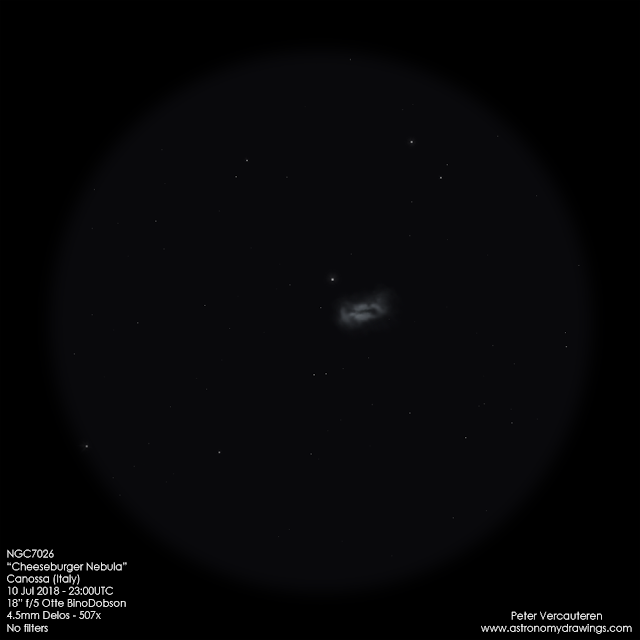Some 5,700 light-years away in the constellation of Cygnus, the swan, lies this small but highly interesting planetary nebula. At first glance you'll notice its two bright equatorial lobes and the sort of dark lane that runs across it, effectively giving it the appearance of a cheeseburger.
The progenitor of this nebula is a very hot (80.000°C) white dwarf star in its centre, which was invisible to me at the telescope. This central star was once a star very much like our own Sun, with an estimated mass of 1.1 times solar. Having finished its hydrogen supply long ago and with helium fusion becoming unstable, the star blew off its entire atmosphere merely 1,500 years ago. Since the atmosphere's much thicker at the equator due to centrifugal forces, the gas can't escape as quickly there and builds up in these bright lobes, expanding at 50 km/s. At the poles, on the other hand, the gas blasts away much more easily and reaches speeds of 150 km/s, hence creating the somewhat cylindrical-shaped nebula. Beyond the polar gaps we see several emission knots which are in fact high speed parcels of gas related to the early stage of the nebula's formation and which are flung out at over 180 km/s.
Scientists theorise that this nebula developed very fast, producing violent shockwaves and instabilities to its environment, unlike more common spherical-shaped planetaries. In a sense this nebula's quite similar to the older and better-known Butterfly (M76) which also exhibits a turbulent, bi-polar structure. Without any doubt the Cheeseburger will eventually evolve along the same lines before disappearing forever within the next ten to fifteen thousand years.

No comments:
Post a Comment